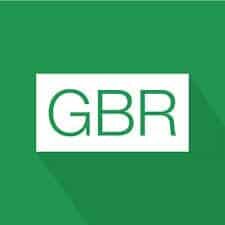
As a small business owner, understanding how to set up contra accounts enables you to prepare and maintain accurate financial records. Are you looking for a way to account for accumulated depreciation, returned merchandise, or damaged inventory? You can use contra accounts to record the goods your customers return, inventory that gets damaged, and equipment depreciation. The above accounts are the standard items that a company’s financial statements will include. However, there are other items as well that may not show in those financial statements. Accumulated depreciation is the total of all depreciation that has been charged to existing fixed assets such as equipment and buildings.

Most accountants choose to record the depreciation over the useful life of an item in the accumulated depreciation contra asset account, which is a credit account. The balance sheet would show the piece of equipment at its historical cost, then subtract the accumulated depreciation to reflect the accurate value of the asset. Contra assets are accounts in the general ledger—where you enter your transactions—that carry a balance used to offset the account with which it is paired.
How to Present Contra Accounts on Financial Statements
The credit balance in this account is amortized or allocated to Interest Income or Interest Revenue over the life of a note receivable. While accumulated depreciation is the most common contra asset account, the following also may apply, depending on the company. Contra accounts allow you to show the amounts that offset a paired related account.
- When a company repurchases shares, it increases the fractional ownership of all remaining shareholders.
- The most common contra account is the accumulated depreciation account, which offsets the fixed asset account.
- In the books, the account of the asset would have a debit value of $100,000, and the CA account would have a credit value of $30,000.
There can be hidden value in stocks that have a lot of fully depreciated buildings. Companies like to depreciate assets as quickly as possible to get the tax savings, so the balance sheet may not state the true value of fixed assets. In either case, using these accounts can help you better manage depreciation expense, keep your accounts receivable balance accurate, and properly dispose of and account for obsolete inventory. Contra asset accounts provide business owners with the true value of certain asset accounts. For example, let’s say your accounts receivable balance is currently $11,500, but you’re not entirely sure that you’ll be able to collect the entire balance due. Contra asset accounts are reported with the related account on the same financial statement.
Allowance for Doubtful Accounts
The two most common contra accounts are the allowance for doubtful accounts/bad debt reserve, which is subtracted from accounts receivable, and accumulated depreciation, which is subtracted from fixed assets. Contra asset accounts are hugely beneficial for nearly all types of companies. A contra asset account example is an accumulated depreciation account that will help the company track and offset fixed assets. A contra liability is an account in which activity is recorded as a debit balance is used to decrease the balance of a liability. Contra Liability a/c is not used as frequently as contra asset accounts.
Hopefully, you have a pretty clear idea of contra asset meaning—no need to ask to define contra asset accounts anymore. Including contra asset accounts on your balance sheets can be hugely beneficial for your business. In an accounting system, ledger accounts are designed to contain only similar transactions and/or balances.

With contra equity accounts, you reduce the number of outstanding shares you list on your company’s balance sheet. Treasury stock and owner’s drawing account are examples of contra equity accounts. Unlike the three previously mentioned contra accounts, contra revenue accounts are not listed in the balance sheet but are written near the top of the income statement. Contra revenue accounts typically offset revenue accounts in a firm’s income statement. Contra equity accounts are accounts in the equity section of the balance sheet that reduce the amount of equity a company holds.
Is a Contra Balances Negative or Positive?
The contra asset account, accumulated depreciation, is always a credit balance. This balance is used to offset the value of the asset being depreciated, so as of September 1, your $8,000 asset now has a book value of $7,866.67. Writing off your obsolete inventory in this manner allows you to expense the cost of the obsolete inventory while also decreasing your current inventory balance using the contra asset account. A bit more work will be required on the accountant’s or account analyst’s behalf if books are done manually without any software.
A contra account enables a company to report the original amount while also reporting the appropriate downward adjustment. Whether reported as separate lines on the financial report or as a cumulative value, the net amount of the pair of accounts is called the “net book value” of the individual asset. In other words, contra revenue is a deduction from gross revenue, which results in net revenue. Any company that owns intangible assets such as software, patent, etc., will maintain an accumulated amortization account. Similar to depreciation, this account plays a significant role in representing the book value of a company’s assets. These accounts might also appear on the balance sheets of the company.
If you’re the one managing your company’s books of accounts, be sure to report the contra account on your financial statement on the line item directly beneath the main account. The natural balance of a contra asset account, in this case, is exactly the opposite of the balance of the related account. Another type of contra account is known as “contra revenue,” which is used to adjust gross revenue to calculate net revenue, i.e. the “final” revenue figure listed on the income statement. As mentioned, CA accounts are usually listed below their matching asset accounts, and the net values of those assets are written next to the contra accounts. This means that accounts receivables have a debit balance of $10,000, and the firm credits revenue for $10,000. A customer returned $100 worth of items, claiming them to be defective.
Contra accounts are worth a look
Examples of equity contra accounts are Owner Draws and Repurchased Treasury Stock Shares. Given that liabilities have a credit balance, ensure that all your contra liabilities accounts have debit balances. Discount on notes payable and discount on bonds are examples of contra liability accounts. By reporting payroll interface for adp workforce nows on the balance sheet, users of financial statements can learn more about the assets of a company.
- Contra Accounts serve as a reduction to the balance of their corresponding accounts to find their net values.
- For example, an increase in the form of a credit to allowance for doubtful accounts is also recorded as a debit to increase bad debt expense.
- We are better off subtracting the accumulated depreciation account (the contra account) from PPE cost account (the parent account) to arrive at the net balance of the PPE.
A contra asset account is not classified as an asset, since it does not represent long-term value, nor is it classified as a liability, since it does not represent a future obligation. This depreciation is saved in a contra asset account called accumulated depreciation. The accumulated depreciation account has a credit balance and is used to reduce the carrying value of the equipment. The balance sheet would report equipment at its historical cost and then subtract the accumulated depreciation. If there’s an increase to allowance for uncollectible accounts, you record the same amount in the bad debt expense of your income statement.
Allowance for doubtful accounts
The net amount is often referred to as the carrying amount or perhaps the net realizable amount. Asset accounts always maintain a debit balance, so anytime that you increase the value of an asset, such as when you deposit customer payments or invoice a customer, that asset account is debited or increased. Likewise, when you pay a bill, your cash account is reduced (credited) because you’re lowering the balance.
For example, if a company just reported equipment at its net amount, users would not be able to observe the purchase price, the amount of depreciation attributed to that equipment, and the remaining useful life. Contra asset accounts allow users to see how much of an asset was written off, its remaining useful life, and the value of the asset. The most common contra account is the accumulated depreciation account, which offsets the fixed asset account. Taken together, the asset account and contra asset account reveal the net amount of fixed assets still remaining.
Assets are debit balances that include resources with expected positive future economic benefits. The contra equity account treasury stock is reported right on the balance sheet. Home Depot has repurchased more than $72 billion of stock to date, with around $7 billion coming during this accounting period. Home Depot reports net receivables and net property and equipment, implying that both are reduced by contra assets. We’ll need to dig into the footnotes to find out what the contra accounts are. Allowance for doubtful accounts is netted from the accounts receivable balance.
Obsolete Inventory Definition – Investopedia
Obsolete Inventory Definition.
Posted: Tue, 30 Mar 2021 07:00:00 GMT [source]
The most prominent of these include allowing companies to present a more accurate picture of their assets. After each accounting period, the company records a depreciation expense of the asset. A contra account is an account that companies use to reduce the value of a related account. It usually nets off against related accounts and provides an opposite effect to the balance. Therefore, contra accounts are the reverse accounts that decrease a specific account’s balance. You’ll continue to use the contra asset account until the equipment has been completely depreciated, retired, or sold.
Understanding a Contra Account
There are three contra asset accounts that commonly appear in an organization’s chart of accounts. It is paired with the trade accounts receivable account, and contains a reserve for receivables that are unlikely to be paid by customers. By combining the balances in these two accounts, one can determine the net amount of receivables that the reporting entity expects to receive. The size of the reserve also reveals the amount of bad debt that the company expects to experience from the current set of receivables. To illustrate, let’s use the contra asset account Allowance for Doubtful Accounts. Since it is a contra asset account, this allowance account must have a credit balance (which is contrary to the debit balances found in asset accounts).

In other words, accumulated depreciation will be $10,000 each year until the car depreciates to $0 twenty years later. The auditors aim to keep the balances at their adequate levels, but the controller might want to keep them as low as possible to reduce expenses and maximize profit levels. Emilie is a Certified Accountant and Banker with Master’s in Business and 15 years of experience in finance and accounting from corporates, financial services firms – and fast growing start-ups. Home Depot also devotes footnote 4 to its share repurchase program and reports that the company is authorized by its board to repurchase $20 billion in shares. Contra accounts are confusing at first, but, with a little study, understanding them becomes second nature.